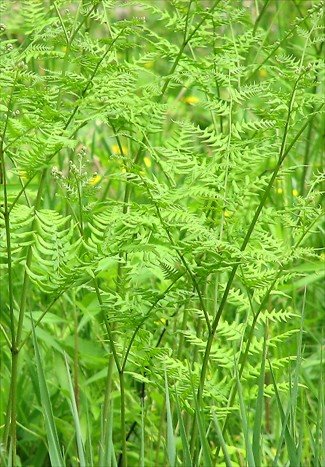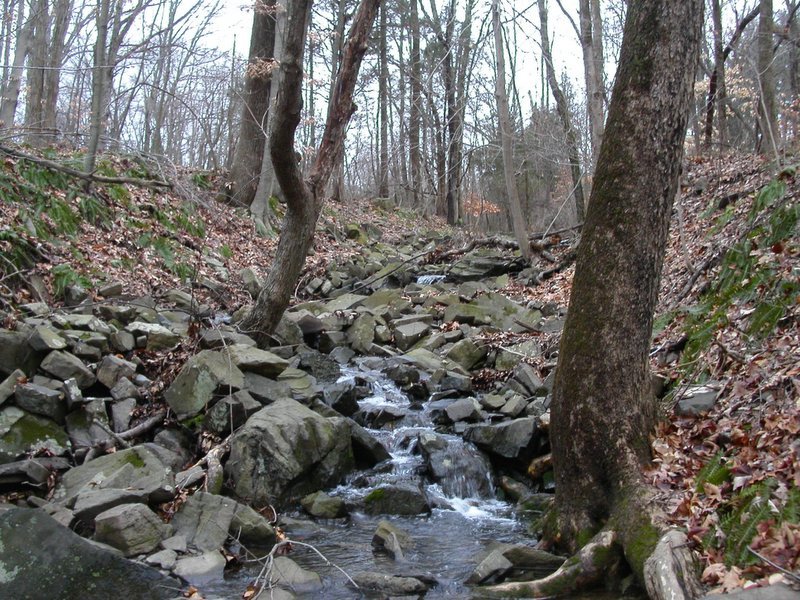
The experiment continues in the main garden - the wet prairie behind the house. Now that our cedar forest has become an open clearing, the light and air is changing the habitat that existed before. Though it makes for a rather messy look in spring and early summer, I'm leaving the established plant colonies such as bracken, sensitive fern, cinquefoil, violets, and equisetum to do their thing. In the newly opened spaces, ruderals (pioneer plants) have seeded in, and I'm leaving them too. I expect many of them to be here for several years until the more competitive species take over. With the passing years, and some judicious weeding to control such undesirable behavior as seeding into the crowns of established plants, I hope the natural process of plant succession and competition will result in the groundcover layer simplifying itself over time.
Here are some pictures of what's happening right now. First, a blanket of equisetum punctuated by a native Scirpus.

Though the equisetum is highly invasive, I like its soft, fuzzy effect seen from a distance, and its primitive character close up. I may as well; I couldn't get rid of it without some highly destructive intervention. And the Scirpus grows so large, and so profusely, it also behaves as a groundcover though on a much larger scale.
In wetter areas, sensitive fern, another "legacy" plant, slowly spreads. I guess it would be classified as a stress tolerator. It lives in very wet places where most other plants would languish. You can even see some pooled water here from a recent rain. Not an example of well drained soil!

Bracken and cinquefoil have covered this corner with two levels.

I know bracken has a reputation for being a real thug, but in my garden environment it is rather well behaved. And it's such an attractive structural plant I'd be happy to have more. In front of it is a carpet of cinquefoil in bloom. Not a beautiful plant, unless closely examined, but useful for covering large areas quickly.
Plants I want to suppress are multiflora rose and poison ivy (Toxicodendron radicans). They have no desirable qualities, in my view, and seem able to compete with just about anything in the plant kingdom, so I'm driven to digging and using Roundup in my struggle with these invaders.
Most of the large prairie-type plants I've inserted into the groundcover matrix - Eupatorium purpureum, Filipendula rubra 'Venusta', Liatris pycnostachya, Rudbeckia maxima, various Silphiums, and large grasses - have no trouble penetrating this dense cover. By midsummer, they'll begin to dominate the landscape and the less attractive lower level will disappear into the background.

 The thick mats of mixed myrtle and Sweet woodruff remind me of William Martin's "layering" planting technique, as he described it in his Vista lecture recently in London (see post below). At his well known garden, Wigandia, in Australia, he gardens on the side of a volcano, in soil and environmental conditions vastly different from mine. His technique does not involve horizontal, visual layering of plants as in a border, but rather vertical layering. He covers the ground thickly with a low, even "thuggish" (to use his word) kind of planting, then grows the larger, more structural plants through the layer covering the ground. I was happy to hear his description because I'm trying to use a similar technique in my garden on Federal Twist Road.
The thick mats of mixed myrtle and Sweet woodruff remind me of William Martin's "layering" planting technique, as he described it in his Vista lecture recently in London (see post below). At his well known garden, Wigandia, in Australia, he gardens on the side of a volcano, in soil and environmental conditions vastly different from mine. His technique does not involve horizontal, visual layering of plants as in a border, but rather vertical layering. He covers the ground thickly with a low, even "thuggish" (to use his word) kind of planting, then grows the larger, more structural plants through the layer covering the ground. I was happy to hear his description because I'm trying to use a similar technique in my garden on Federal Twist Road.
